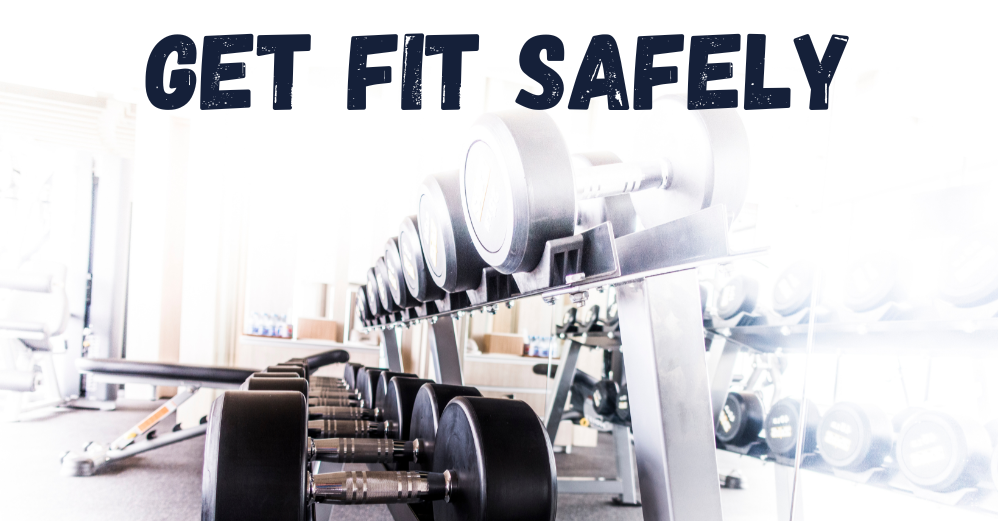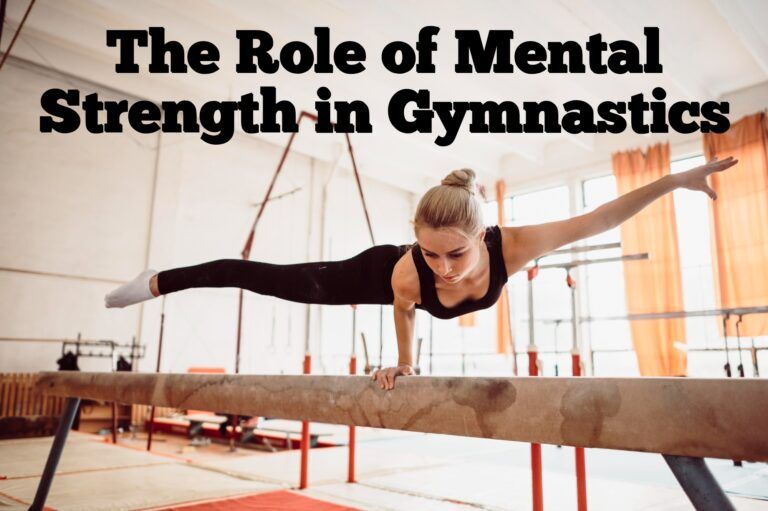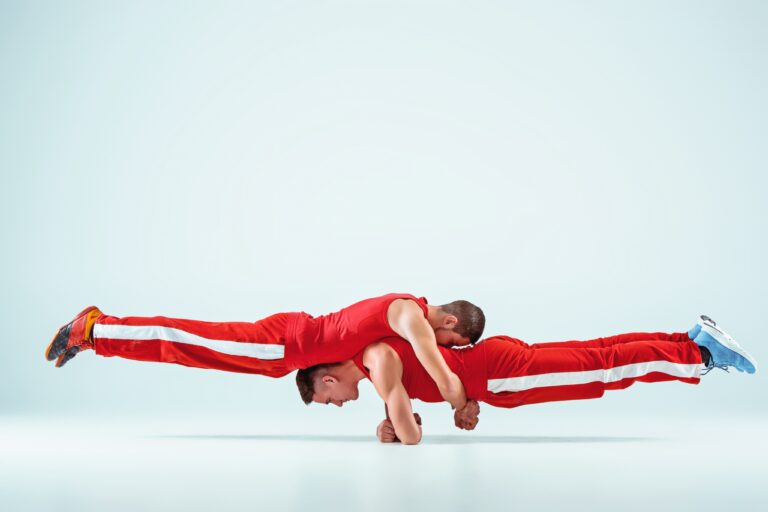I’ve always been fascinated by how gymnastics combines physical prowess with artistic expression.
It’s incredible to see how this sport has adapted over the centuries.
An art of strength and grace, it has traveled through time, evolving from simple physical exercises in ancient Greece to a global sport.
In ancient times, gymnastics was primarily seen as a method to keep the body strong and combat-ready.
Over the centuries, it took on new forms, incorporating elements of dance, acrobatics, and artistic expression.
From the emergence of modern gymnastics in the 19th century, with the introduction of apparatus like the parallel bars and balance beam, to its inclusion in the early modern
Olympic Games in 1896, gymnastics has continued to captivate the imagination of the public.
Throughout the 20th century, gymnastics further diversified, giving rise to subcategories such as rhythmic gymnastics, trampoline, and aerobic gymnastics.
Each form has its uniqueness, requiring a blend of coordination, strength, flexibility, and creativity.
Today, gymnastics goes beyond competitive sports.
It has become a popular way to maintain an active lifestyle, improve physical and mental health, and develop a range of skills useful in everyday life.
Programs for children, classes for adults, and options for seniors demonstrate the wide appeal of this sport.
Gymnastics Yesterday: A Leap into the Past
The history of gymnastics is fascinating and multifaceted, with roots dating back to ancient civilizations.
I’ve always been intrigued by how this sport evolved.
It all started in ancient Greece, where gymnastics was considered not only a means to keep the body fit but also an important educational discipline.
It was an integral part of youth training.
The word “gymnastics” itself derives from the Greek “gymnos,” meaning “naked,” reflecting the practice of exercising often without clothing.
The Greeks regarded gymnastics as essential for the balance between mind and body, a concept that still resonates today.
Training included exercises of strength, endurance, and agility, combined with competitions that emphasized physical skills and dexterity.
With the decline of ancient Greece and the rise of the Roman Empire, gymnastics transformed.
The Romans focused on military use, turning these exercises into practical training for soldiers.
This shift led to the loss of some artistic and educational aspects.
Interest in gymnastics declined during the Middle Ages.
However, the Renaissance and the Age of Enlightenment brought renewed interest in ancient Greek culture, including gymnastics.
In the 19th century, Friedrich Ludwig Jahn, the “father of modern gymnastics,” revitalized the discipline in Germany.
He introduced essential apparatus like parallel bars, horizontal bars, and the balance beam.
Gymnastics became an Olympic sport in the 1896 modern Olympic Games.
Since then, gymnastics has evolved into various disciplines and styles.
These include artistic and rhythmic gymnastics, as well as newer forms like trampoline and aerobics.
Gymnastics has expanded beyond competitive sports to become a practice accessible to all.
Gymnastics Today: Trends and Innovations
I’m absolutely convinced that contemporary gymnastics has evolved extraordinarily.
This is thanks to the introduction of new equipment, advanced training techniques, and increased attention to athlete safety.
Modern Equipment:
Gymnastic equipment has been refined to enhance both performance and safety.
Innovative materials like advanced springs in trampolines and high-density foam in landing mats provide greater support and reduce the risk of injuries.
Traditional apparatus like parallel bars and balance beams have also been improved with more grip-friendly coatings and ergonomic designs.
Training Techniques:
The approach to training has evolved significantly.
In addition to emphasizing strength and agility, there is a greater focus on spatial awareness and technique development.
Virtual simulation and motion analysis software are increasingly used to fine-tune routines and prevent injuries, allowing coaches to analyze every aspect of an athlete’s performance in detail.
Safety Importance:
Safety has become an absolute priority in modern gymnastics.
The implementation of stricter rules for equipment and training techniques, combined with increased awareness of potential injuries, has led to a safer environment for athletes.
Training programs for coaches and judges highlight the importance of safe and responsible practices.
Emerging Trends:
In response to an increasingly diverse and connected global audience, gymnastics has seen the emergence of new disciplines, such as parkour and hybrid forms of gymnastics and dance.
These new trends attract a wider audience and offer creative and inclusive ways to participate in the sport.
Inclusion and Accessibility:
Gymnastics is also evolving to become more inclusive.
Programs for athletes with disabilities, classes for all ages and skill levels, and the incorporation of fitness and wellness elements make gymnastics accessible to a broader audience than ever before.
Gymnastics for Kids: Foundations and Fun

I believe that introducing gymnastics at these stages of life helps develop a positive attitude toward physical exercise.
It also instills healthy habits that can last a lifetime.
Starting from ages 3-5, playful activities and natural movements can evolve into fundamental gymnastic exercises, laying the groundwork for skill development and physical literacy.
In this initial stage, the goal is to make the experience enjoyable and playful, encouraging children to explore movement through jumps, rolls, and balancing activities.
As children grow, around ages 6-8, they can participate in gymnastics classes tailored to their age.
These classes provide a structured and safe environment where they can learn basic techniques under the guidance of experienced instructors, socialize with peers, and gain a fundamental understanding of gymnastic skills.
Safety is paramount; seeking out facilities specifically equipped for children, with cushioned mats and appropriately sized equipment, is essential.
During late childhood and preadolescence, from ages 9 to 12, children can begin to specialize in specific gymnastics disciplines, further developing their coordination, strength, and flexibility.
In this period, it’s important to encourage versatility and experimentation with various movements and activities to build a broad base of physical skills.
Critical throughout the process is building self-confidence.
Celebrating every small success and progress builds self-esteem and motivation.
Listening to children and paying attention to their interests and comfort levels are crucial to keeping them engaged and passionate.
Some may gravitate toward more dynamic activities, while others may prefer less intense exercises.
Parental involvement plays an important role.
Their participation and encouragement, both at home and during lessons, create a supportive environment that can be a powerful motivator.
Advantages of Early Start
Early involvement in gymnastics offers numerous benefits, including the early development of muscle memory.
Children learn and internalize complex movements more easily, making such movements almost instinctual in the future.
Furthermore, the lack of fear of falling in young children allows them to explore and experiment with greater freedom, a fundamental aspect of progress in gymnastics.
Challenges for Young Athletes
Despite the advantages, early initiation also presents challenges.
One of the main challenges is the limited attention span of young children.
Training requires concentration, which can be difficult for them to maintain for extended periods.
Parents and coaches can play a crucial role in helping children stay focused.
Creating a playful and engaging learning environment can help keep their attention high.
Workouts should be structured to include a variety of activities to prevent monotony.
Additionally, it’s important to include frequent short breaks to allow children to rest and regain focus.
Gymnastics and Bone Development in ChildrenThe study examines how prolonged gymnastics during growth and maturation positively influences bone development in children. It has been found that young gymnasts have stronger and denser bones compared to peers who do not engage in sports. However, elite gymnastics training, which often requires strict weight control, does not seem to have positive effects on bone development. Nevertheless, the intense physical exercise typical of gymnastics, which places the body under load, helps develop stronger bones. The research highlights that regular physical exercise is crucial to maintain bone health throughout life, but the onset of puberty is the most critical time to maximize bone density increase. Specific gymnastics activities are particularly effective in improving bone health in growing children. Recreational gymnastics, which does not require a high level of training and can be practiced by most children for a few hours a week, also has a positive impact on bone development. (Pubmed/5950742) |
Adolescents and Gymnastics: Developing Skills and Confidence
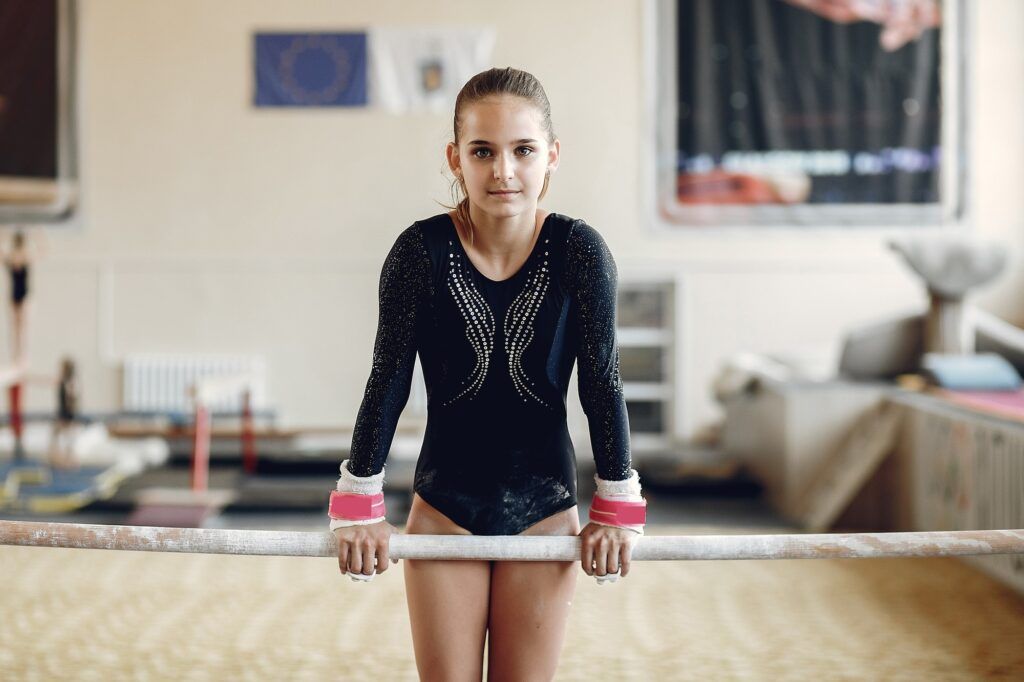
During adolescence, a period that spans from 13 to 18 years old, gymnastics provides a unique context for personal and physical development.
During these formative years, adolescents undergo significant physical and emotional changes.
Gymnastics, with its emphasis on strength, flexibility, and coordination, fits perfectly with these transformations, offering a safe and structured way to explore and adapt to changes in their bodies.
As teenagers progress in their gymnastic skills, they discover a new sense of accomplishment and competence.
This not only improves their physical fitness but also provides a significant boost to their self-confidence.
Another crucial aspect of gymnastics during adolescence is the opportunity to experience teamwork and collaboration.
While some forms of gymnastics are individual, many activities and competitions encourage collaboration and mutual support.
These collective experiences teach teenagers the value of helping one another, effective communication, and building positive relationships—transferable skills that are valuable in all aspects of life.
Furthermore, gymnastics provides teenagers with an environment in which they can set personal goals and work towards achieving them.
This process of setting, pursuing, and ultimately achieving goals is a powerful exercise for personal development, teaching them the importance of perseverance, planning, and commitment.
Finally, gymnastics can be an anchor of stability during the turbulent years of adolescence.
It provides structure and routine, elements that can be particularly reassuring and helpful during a period of life often characterized by uncertainty and change.
Through gymnastics, teenagers learn to manage stress, express their creativity, and find a sense of belonging within a community, contributing significantly to their overall well-being.
Gymnastics for Adults: Benefits and Tips for Every Age Group 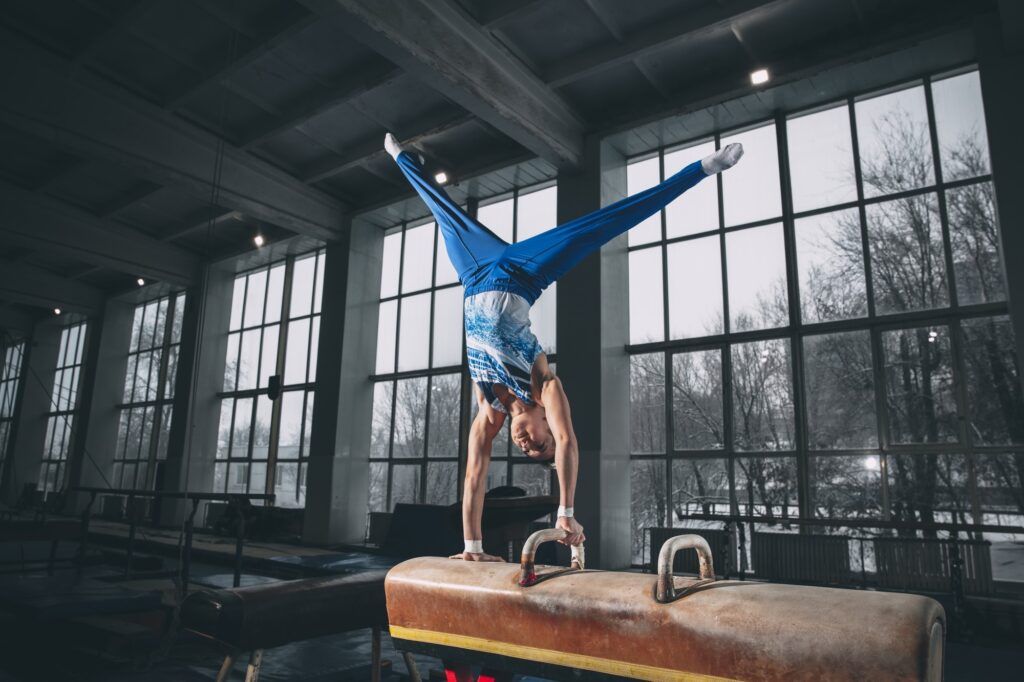
Gymnastics, often seen as an activity for the young, offers numerous benefits for all ages.
Personally, I’ve always focused on weightlifting and calisthenics, but I started gymnastics as an adult and found it incredibly rewarding.
I just practice some basic exercises, and even these have significantly improved my flexibility.
For adults who are new to gymnastics, it’s important to start with beginner-friendly programs.
These programs should focus on learning basic techniques, low-impact exercises, and gradual adaptation of the body to physical activity.
Ages 30-40: At this stage, gymnastics helps counteract the natural loss of muscle mass and strength.
It’s ideal for building muscles, improving flexibility and coordination, and strengthening the cardiovascular system, preventing age-related diseases.
Ages 40-50: At this age, gymnastics can help maintain bone density, and reduce the risk of osteoporosis, and heart diseases.
Low-impact exercises focused on flexibility are particularly beneficial.
Ages 50-60 and beyond: Older adults benefit from gymnastics to maintain balance and prevent falls.
The emphasis should be on mobility, balance exercises, and gentle strength training.
For all adults, gymnastics improves mental health, reducing stress and enhancing mood and sleep quality.
Gymnastics for Seniors: Flexibility and Strength
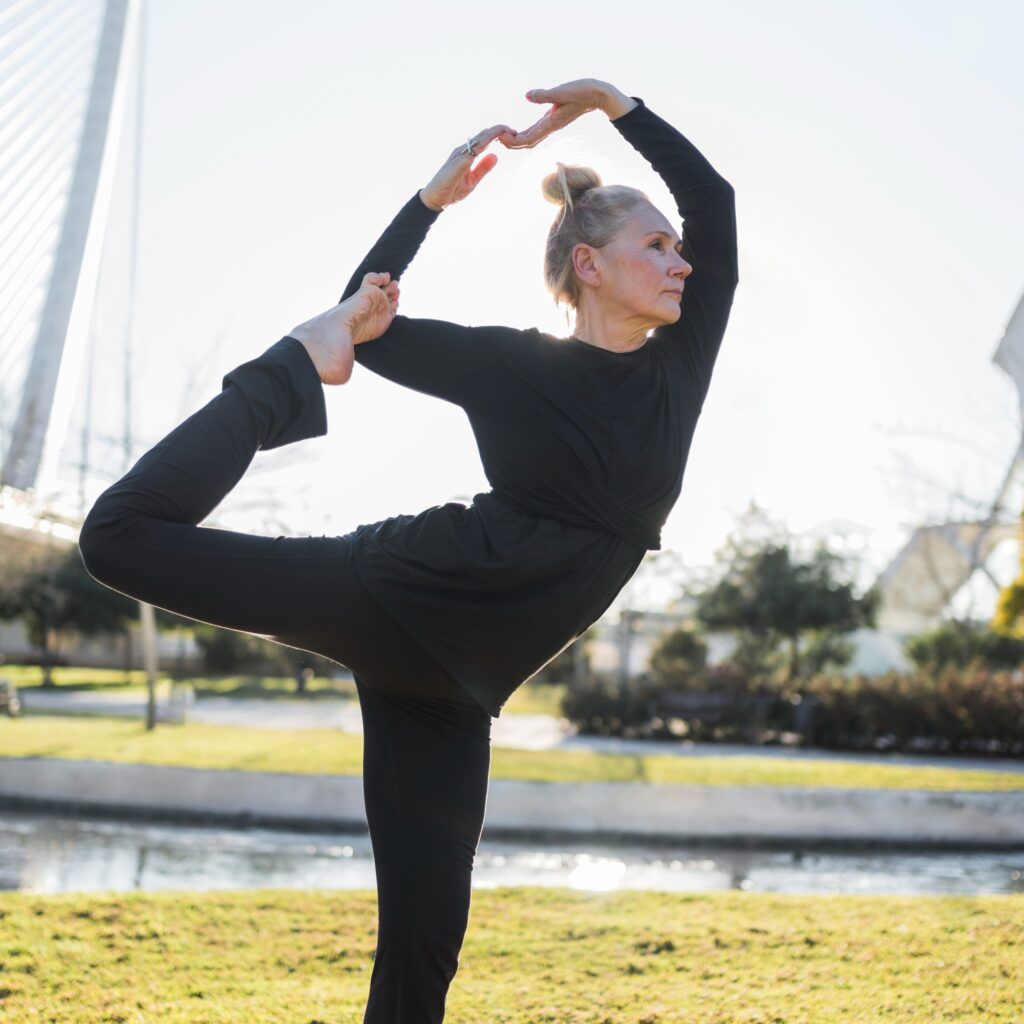
Gymnastics for seniors, intended for people aged 60 and over, is essential for maintaining health and autonomy.
Adapting exercises to this age group involves focusing on low-impact activities that improve mobility, flexibility, and strength without overloading the joints or the cardiovascular system.
Joint Mobility:
As individuals age, around 60-70 years old, joints can become stiffer.
Stretching exercises and gentle movements are ideal for maintaining and improving joint mobility, and reducing pain and stiffness.
Muscle Strength:
For those over 70, gentle yet effective strength exercises are crucial to counteract the loss of muscle mass.
Good muscle strength reduces the risk of falls and fractures, common in this age group.
Balance:
Improving balance is vital to prevent falls, especially in those over 75.
Balance exercises can range from simple one-legged standing exercises to those involving equipment like stability balls.
Customization:
Each individual over 60 has unique needs and limitations.
Personalized programs, under the guidance of experienced instructors, ensure that exercises are safe and effective.
Social and Psychological Benefits:
In addition to physical benefits, gymnastics for seniors offers social and psychological advantages.
Gymnastics classes provide opportunities for socialization, reducing isolation and promoting a sense of community.
Regular physical activity improves mood and combats depression and anxiety, crucial aspects of seniors’ well-being.
Benefits of Regular Gymnastics for Older WomenResearch has examined the effects of regular gymnastics on older women over the age of 65, focusing on blood pressure, blood glucose levels, and total cholesterol. Thirty-four women were divided into two groups: one practiced gymnastics regularly for three weeks, and the other did not. The results showed that regular gymnastics can significantly reduce blood pressure and cholesterol levels. Therefore, gymnastics for older adults could be a useful option for preventing cardiovascular diseases and metabolic syndrome. (Pubmed/8976894) |
The Best Age to Start Gymnastics
In the world of gymnastics, the “right” age to start is a subject of varying opinions.
Some experts argue that starting young, around 2-3 years old, can offer significant advantages in terms of developing coordination and balance.
However, others emphasize that starting too early may put physical and mental pressure on children.
According to general studies in the field of sports psychology, the optimal age can vary depending on various factors, including the child’s physical and emotional maturity as well as their interest in the sport.
Starting gymnastics at preschool age is believed to contribute to building self-confidence and independence, but it’s crucial to consider the individual needs and preferences of the child.
Experts in child development and gymnastics agree that there is no universally perfect age to start this sport.
The best approach is to observe the child: their physical readiness, interest, and responsiveness to the sport.
As suggested by various sources in the fields of psychology and physical education, the focus should be on providing a positive experience rather than a rigid starting schedule.
Effects of Gymnastics on Children’s Development in Primary SchoolsA study assessed how an 8-week gymnastics course could influence children’s motor skills and their self-image. 113 children, approximately 9 years old, were divided into two groups: one group participated in the gymnastics course, while the other group continued with regular lessons. Results? Younger children who participated in gymnastics showed improvements in their basic motor skills. On the other hand, older children who did not participate in gymnastics saw improvements in their overall coordination. However, for all children, regardless of age, those who took the gymnastics course experienced an improvement in their self-perception and physical abilities. In short, gymnastics has proven to be particularly beneficial for younger children, helping them not only move better but also feel better about themselves. (The Impact of Gymnastics on Children’s Self-Concept and Movement Skills in Schools) |
RELATED:>>> 25 Unique Benefits of Gymnastics Explained
Conclusion
Gymnastics, with its rich history and evolution over the centuries, is now an incredibly versatile activity.
It’s accessible to people of all ages and skill levels.
For young children, it brings the joy of movement.
Adolescents can build confidence and skills.
Adults and the elderly can maintain health and fitness.
Gymnastics offers something for everyone.
Personally, I’ve found that gymnastics has added a fun and challenging element to my routine.
No matter your age or experience level, there’s always something new to learn.
The practice of gymnastics helps you grow in many ways.

